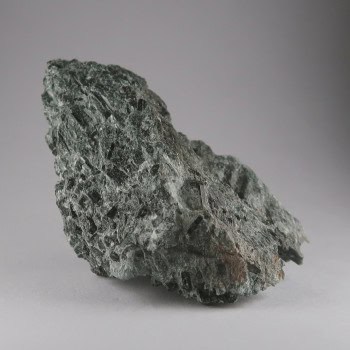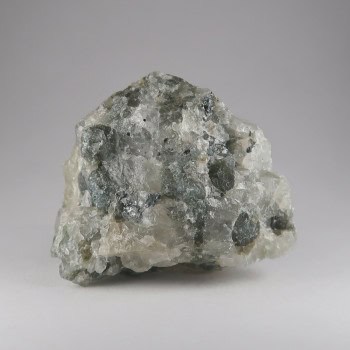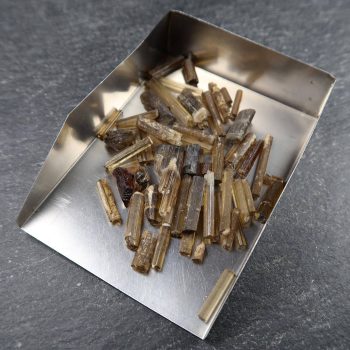Dravite
Dravite is a relatively common form of the mineral Tourmaline, which is usually a brown to dark brown colour. It is typically used for jewellery, or as mineral specimens.
Showing all 3 results
-

Dravite Tourmaline from Lysebotn, Norway
£10.00 -

Fluor-dravite from Bamble, Norway
£10.00 -

Tourmaline Crystals (Brown/Dravite)
Price range: £0.45 through £0.75
Information about Dravite
Dravite, a variety of tourmaline, is typically brown to dark brown, depending on its iron and magnesium content. It forms prismatic crystals with vertical striations, often with sharp terminations.
It is a member of the tourmaline group, and forms a series with both Elbaite and Schorl:
Dravite-Elbaite series: NaMg3Al6(Si6O18)(BO3)3(OH)3(OH) to Na(Li1.5Al1.5)Al6(Si6O18)(BO3)3(OH)3(OH
Dravite-Schorl series: NaMg3Al6(Si6O18)(BO3)3(OH)3(OH) to NaFe32+Al6(Si6O18)(BO3)3(OH)3(OH)
There is also a fluorine analogue, fluor-dravite: NaMg3Al6(Si6O18)(BO3)3(OH)3F
Uses and History
Dravite is primarily valued in the gem and jewellery industry, where high-quality specimens are cut and polished into gemstones. It is also of interest to mineral collectors for its well-formed crystals and rich colours.
Dravite was first described in 1883 and named after the Drau River in what is now Slovenia. Since its discovery, dravite has been identified in various locations worldwide, including Sri Lanka, Brazil, Canada, and Madagascar.
Mineralogy
Pale to dark brown, brownish black, dark yellow, green
Hazards and Warnings
Mineral collectors should wash their hands after handling specimens, to avoid any exposure to potential toxins.
Almost all rocks, minerals (and, frankly, almost all other substances on earth) can produce toxic dust when cutting, which can cause serious respiratory conditions including silicosis.
When cutting or polishing rocks, minerals, shells, etc, all work should be done wet to minimise the dust, and a suitable respirator or extraction system should be used.
Translations
Arabic:
Hindi:
Portuguese:
- Dravita
Bengali:
Indonesian:
Punjabi:
English:
Italian:
Russian:
- Дравит
French:
Japanese:
- ドラバイト
Spanish:
- Dravita
German:
- Dravit
Korean:
- 드라바이트
Thai:
Gujurati:
Mandarin Chinese:
- 镁电气石
Urdu:
